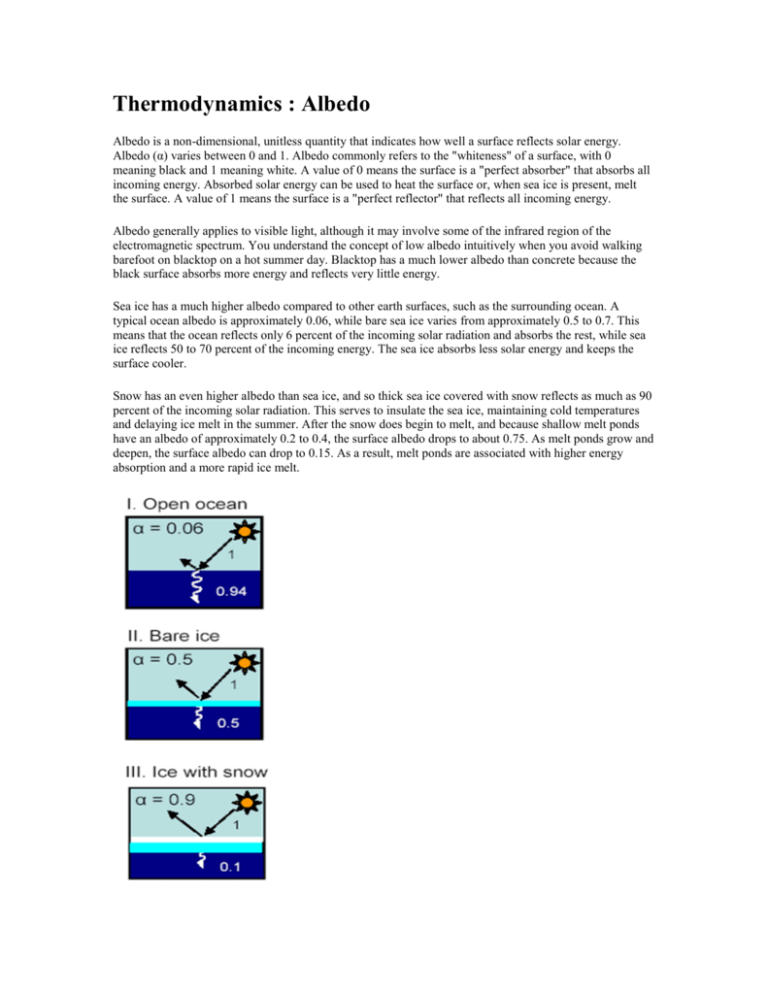Albedo
advertisement

Thermodynamics : Albedo Albedo is a non-dimensional, unitless quantity that indicates how well a surface reflects solar energy. Albedo (α) varies between 0 and 1. Albedo commonly refers to the "whiteness" of a surface, with 0 meaning black and 1 meaning white. A value of 0 means the surface is a "perfect absorber" that absorbs all incoming energy. Absorbed solar energy can be used to heat the surface or, when sea ice is present, melt the surface. A value of 1 means the surface is a "perfect reflector" that reflects all incoming energy. Albedo generally applies to visible light, although it may involve some of the infrared region of the electromagnetic spectrum. You understand the concept of low albedo intuitively when you avoid walking barefoot on blacktop on a hot summer day. Blacktop has a much lower albedo than concrete because the black surface absorbs more energy and reflects very little energy. Sea ice has a much higher albedo compared to other earth surfaces, such as the surrounding ocean. A typical ocean albedo is approximately 0.06, while bare sea ice varies from approximately 0.5 to 0.7. This means that the ocean reflects only 6 percent of the incoming solar radiation and absorbs the rest, while sea ice reflects 50 to 70 percent of the incoming energy. The sea ice absorbs less solar energy and keeps the surface cooler. Snow has an even higher albedo than sea ice, and so thick sea ice covered with snow reflects as much as 90 percent of the incoming solar radiation. This serves to insulate the sea ice, maintaining cold temperatures and delaying ice melt in the summer. After the snow does begin to melt, and because shallow melt ponds have an albedo of approximately 0.2 to 0.4, the surface albedo drops to about 0.75. As melt ponds grow and deepen, the surface albedo can drop to 0.15. As a result, melt ponds are associated with higher energy absorption and a more rapid ice melt.











